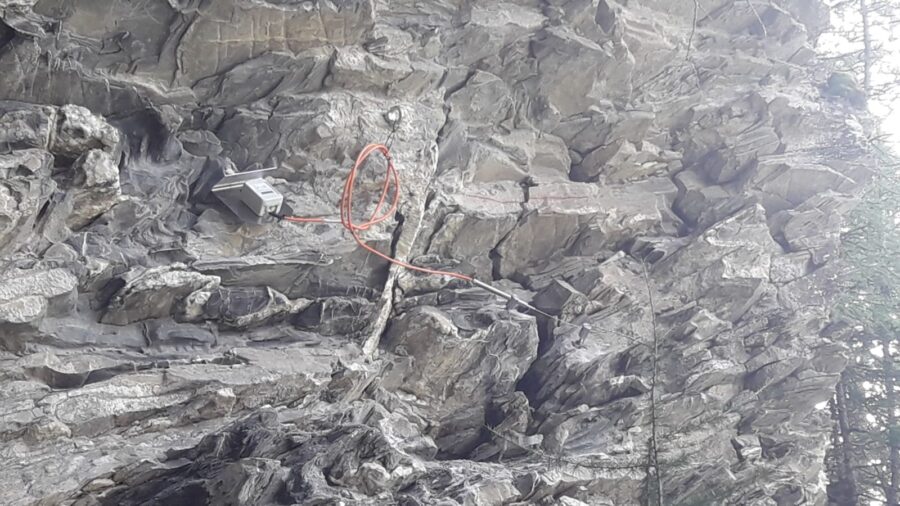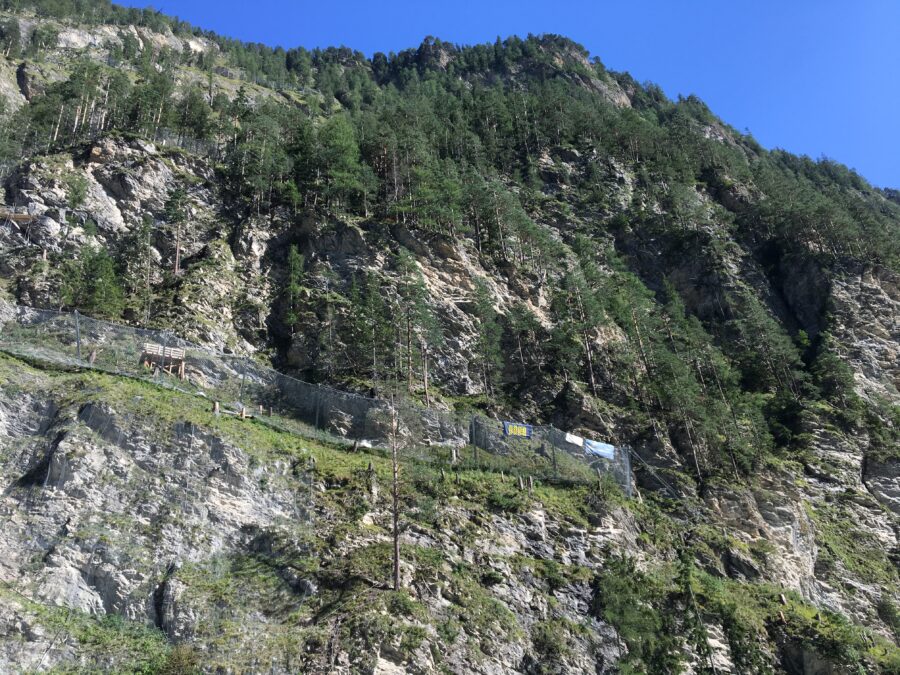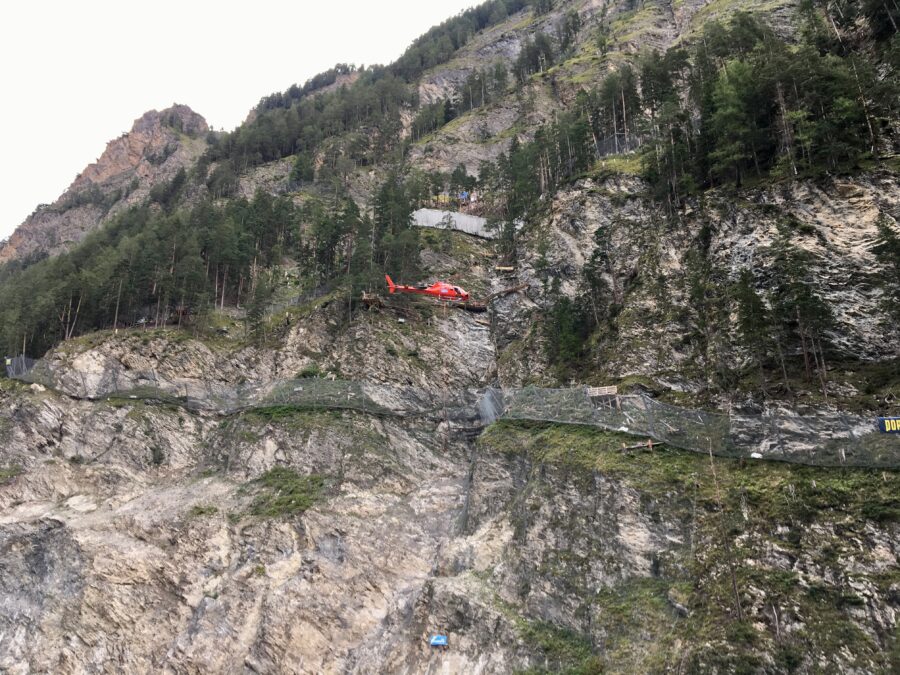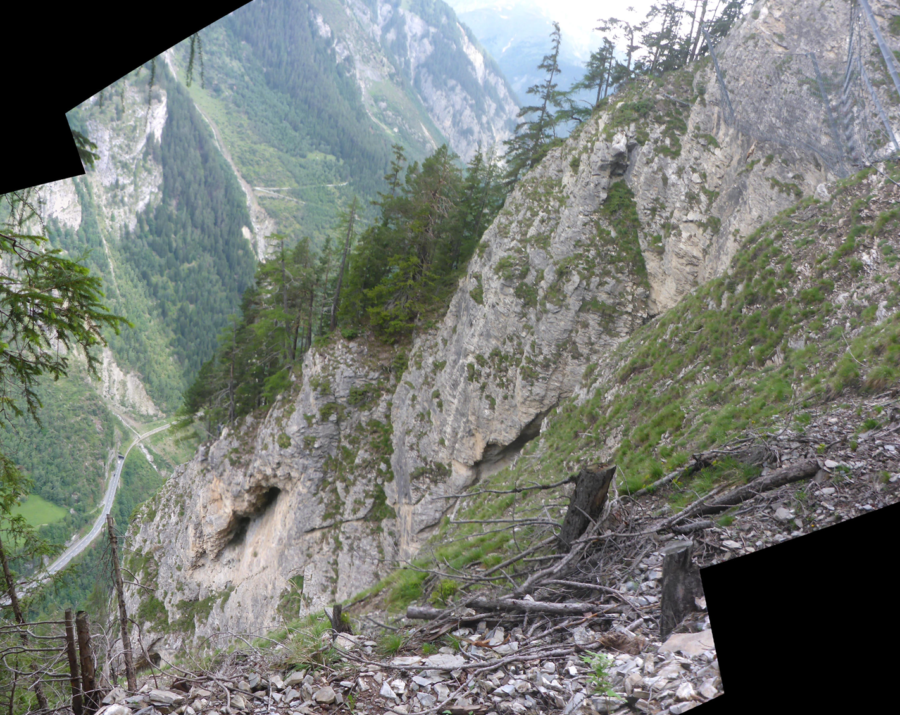Protecting a hydro power plant inlet from the risk of rock falls
Challenge
European nations are increasingly preoccupied with developing local sources of renewable energy to power homes and industries. One such source is hydroelectric power—and one hydro project taking shape on the Swiss-Austrian border could provide 414 gigawatt-hours of power a year.
The River Inn power plant involves building a weir system plus a 22-kilometer tunnel to take water down the Inn Valley, near St Moritz, driving a turbine along the way. But the intake for the tunnel sits under a 600-meter rock face that had been found to be unstable. A rock fall could block the tunnel intake and, more importantly, trap workers digging the tunnel during the construction phase of the project. For this reason, it was important to have a reliable monitoring solution in place before beginning the work.
Solution
The Swiss engineering services company Huggenberger was called in to take care of monitoring equipment supply and installation. An obvious challenge was that the rock face was too steep for Huggenberger’s engineers to access it. Hence, Huggenberger needed a monitoring solution that was simple enough for mountain construction climbers, not familiar to monitoring technology, to install the system and that would work for years on end with a minimum maintenance needed.
The company chose Worldsensing Piconode data loggers, 1 channel “mini nodes” set to take readings every two minutes, and pre-assembled them with displacement transducers before giving them to climbing teams for installation. As each assembly was installed, Huggenberger’s technicians were able to verify that it was working correctly via a Worldsensing gateway near the tunnel entrance. Following installation, the frequency of readings was reduced so the units would last even longer without maintenance.
The entire monitoring network and devices are monitored and managed through CMT Edge, an on-premises network management tool, capable of showing the status and health of all devices across the Worldsensing network and in turn is connected to the Huggenberger-Monitor analysis system via API.
Benefits
The project team installed 43 sensors across the rock face, and towards the latter part of the installation Huggenberger’s technicians were able to track progress without even going on site—all they needed was access to the gateway and a phone connection to the climber. The Piconodes, protected with a stainless steel cover and mounting device supplied by Huggenberger, are small and robust, making them easy for climbers to carry yet able to withstand the harsh cliffside environment for many years on a single battery pack.
More importantly, the nodes use a low-power, wide-area network (LPWAN), long-range (LoRA) radio transmission, which means they do not need to be attached by cables to the gateway. This was a critical benefit because running cables all the way up the rock face would have been prohibitively expensive and nearly impossible. The data from the sensor network is integrated directly into Huggenberger’s analysis systems via an application programming interface. Since installation in 2000, the Piconodes have worked flawlessly, helping safeguard the security of operations at the foot of the cliff.
Are you planning a project?
Get in touch with us to share your needs and project requirements. We are experts in engineering and IoT and are happy to help.



